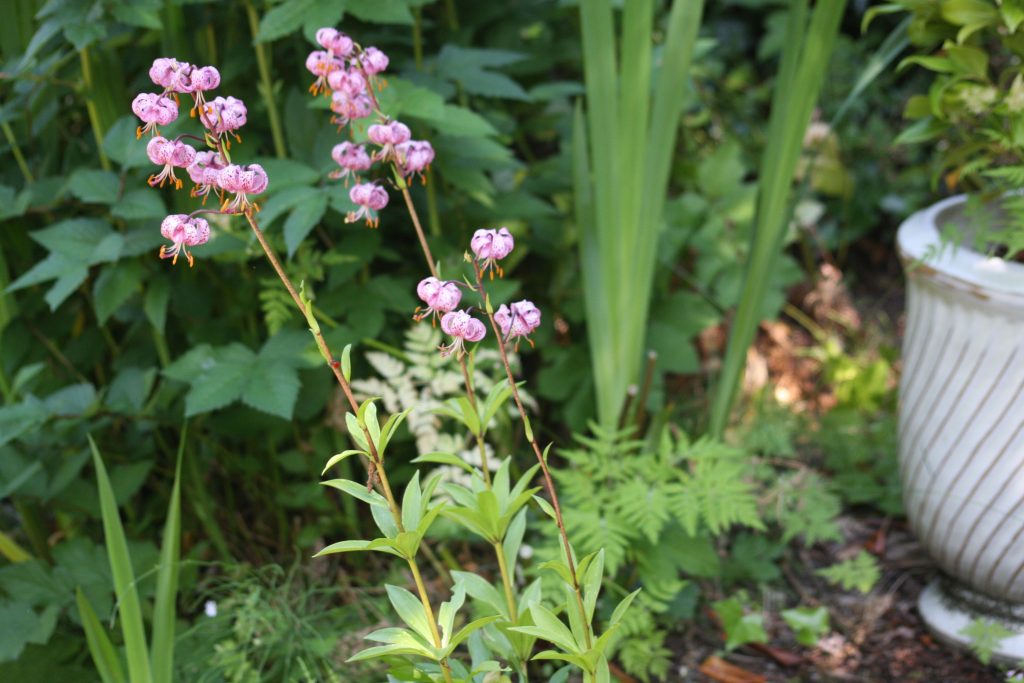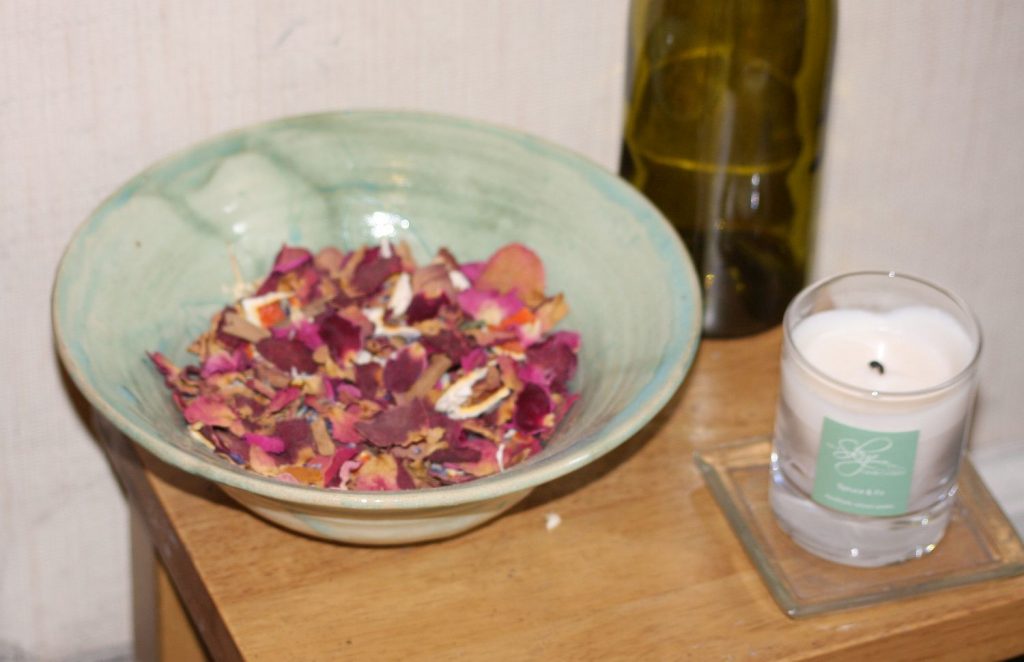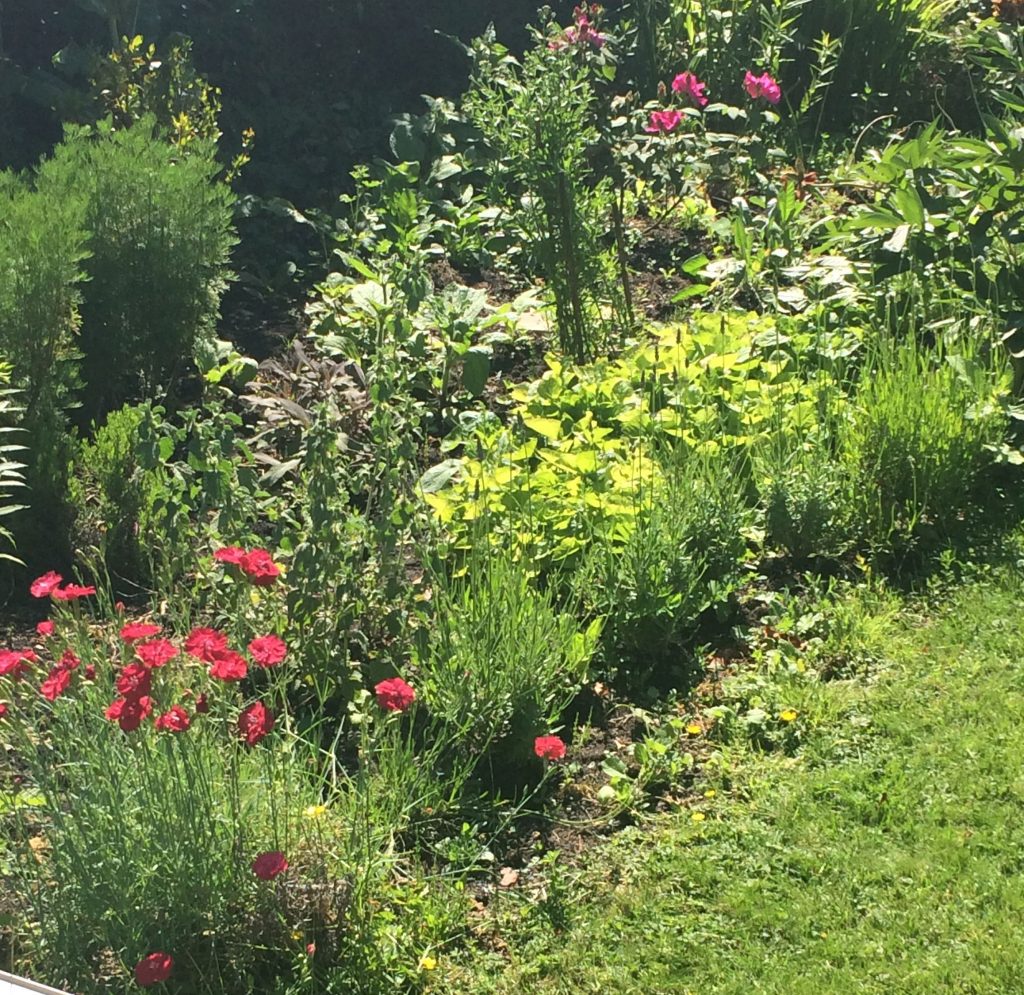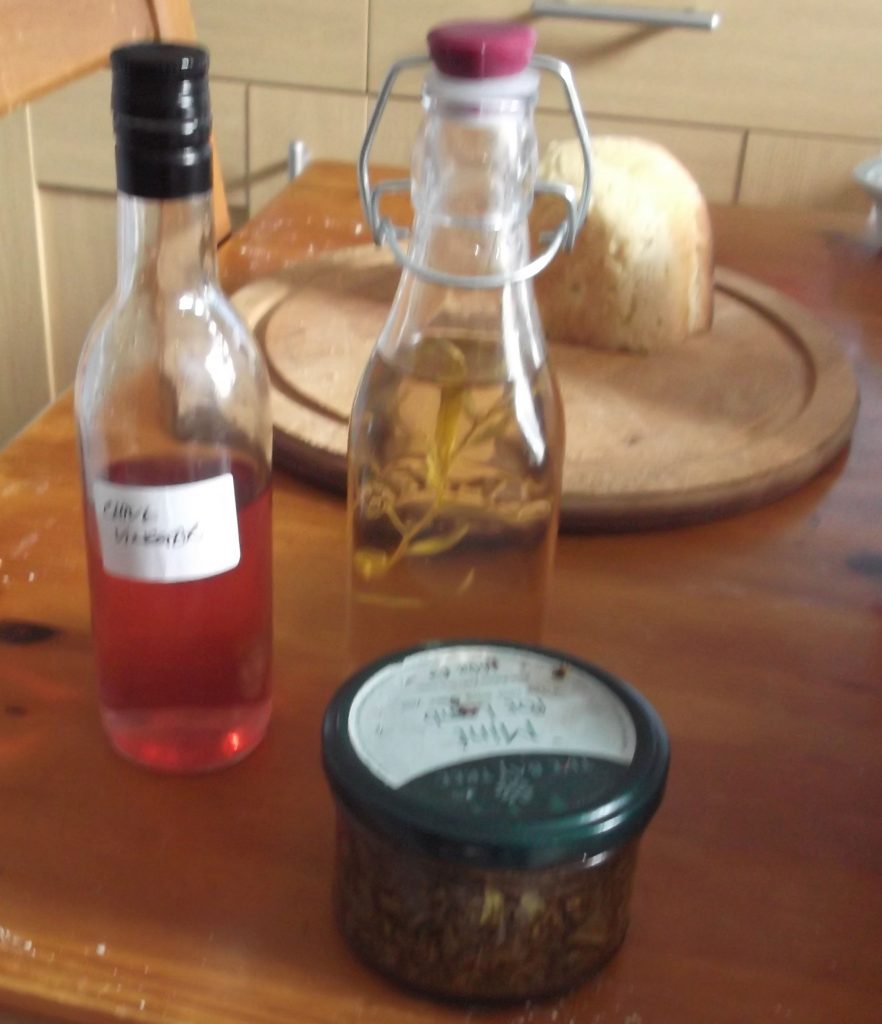
This is our last summer in this garden, and it has been especially generous. In spite of the long cold spell, everything seems to have done well. The tulips were magnificent, the witch hazel (which sulked and grew very slowly for about ten years) suddenly put on about a metre of new growth, the roses are outdoing each other in flower production and the chamomile bed has bulked up nicely. I have been trying to grow these martagon lilies for at least twenty years, and now, here they are.

The berries are doing well too. For the first time I got enough blackcurrants to make a pot of jam, and the branches of the redcurrants are bending with the weight of berries. I’m not sure what to do with them – there is only so much redcurrant jelly two people can use, and though they combine very well with other fruit – especially raspberries, I’m running out of ideas. Possibly the blackbirds will solve that problem for me! The gooseberries did very well too, but the sawfly caterpillars found them, and the bushes are looking pretty stark just now.
I have started a pot pourri pot in a cafetiere – just the thing to keep the layers of petals pressed down. You layer partially dried rose petals, aromatic leaves, lavender and anything else fragrant – I have lemon balm, scented geranium leaves and verbena, and I will add lavender bog myrtle leaves and costmary as I go – with sea salt and a few drops of brandy, press down hard and leave to mature for several weeks. When we get to the new house, I will break up the petal-cake, mix it with some properly dried rose petals for glamour, and some spices, and it should make the new house smell like home.

I have also finally achieved two things the herbals all tell you to do, and which I have always found impossible up to now. One is to make furniture polish scented with sweet cicely. Apparently the trick is to crush the green seeds and leave them in a mix of beeswax and turpentine gently melted together (very gently – turpentine is inflammable. The book suggests leaving it in the sun, but the sun in my garden wasn’t hot enough) until the scent is imparted to the liquid. I strained the seeds out afterwards, which wasn’t easy, because the mixture sets while you’re looking at it, and the result is excellent.
The other is furniture polish from horsetails. Horsetails have been the bane of my life, and I was dying to find some use to make of them. The trick is to leave a LOT of horsetails to soak in water for several hours, and then simmer the mix for 15 minutes. This is anti-social. It smells vile. The strained liquid, however, is a very fine silica solution, and it does indeed polish pewter very well without scratching, leaving a lovely pearly glow. Credit for finally making these remedies work goes to Herbs About the House by Philippa Back, published in 1977 by Darton Longman and Todd. It’s long out of print but actually available on Amazon.
I have taken cuttings, potted on seedlings and divisions of my favourite plants, and I’m saving seeds as they come. Glasgow doesn’t seem to run to big gardens, and what they do have seems to consist of astroturf and patio entertaining spaces, but I am laying my plans. The half-a-hundred herbs will find their places in the new garden!




 When we visited the Kilmartin Museum, my first port of call was the lovely herb garden planted alongside the path. I had been struck by this last time I was there, because it seemed very different to a lot of recent constructions, which often come straight out of a picture book, without regard to climate or local tradition. This garden had a lot of local plants, mostly native, but not all – Highland herbalists were in touch with healing traditions all over the world, and were willing to import or try out new ideas. They were all well-grown and in good condition, and divided into beds according to their uses for healing, dyeing, cooking and fibre – including flax and nettle – and beautifully labelled and displayed.
When we visited the Kilmartin Museum, my first port of call was the lovely herb garden planted alongside the path. I had been struck by this last time I was there, because it seemed very different to a lot of recent constructions, which often come straight out of a picture book, without regard to climate or local tradition. This garden had a lot of local plants, mostly native, but not all – Highland herbalists were in touch with healing traditions all over the world, and were willing to import or try out new ideas. They were all well-grown and in good condition, and divided into beds according to their uses for healing, dyeing, cooking and fibre – including flax and nettle – and beautifully labelled and displayed.
